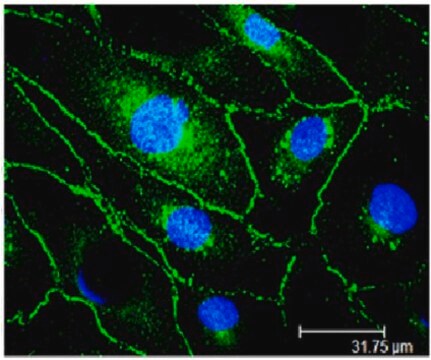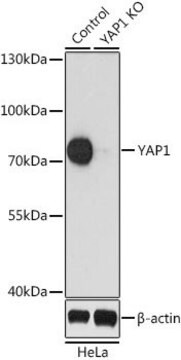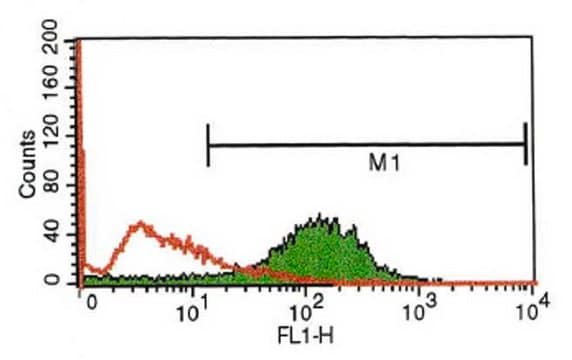E9653
Anti-Endothelial Cells antibody, Mouse monoclonal
clone P1H12, purified from hybridoma cell culture
Sinónimos:
Anti-CD146
About This Item
Productos recomendados
biological source
mouse
conjugate
unconjugated
antibody form
purified immunoglobulin
antibody product type
primary antibodies
clone
P1H12, monoclonal
form
buffered aqueous solution
mol wt
antigen 130 kDa
species reactivity
human
technique(s)
flow cytometry: suitable using 2% paraformaldehyde 9:1 methanol
immunocytochemistry: suitable using 4% paraformaldehyde 0.1-0.5% triton X-100, smears or live cells
immunohistochemistry: suitable using using acetone-fixed sections of human tongue
immunoprecipitation (IP): suitable
indirect ELISA: suitable
microarray: suitable
isotype
IgG1
shipped in
dry ice
storage temp.
−20°C
target post-translational modification
unmodified
General description
Specificity
Immunogen
Application
- immunocytochemistry
- immunohistochemistry
- flow cytometry
- immunoprecipitation
- enzyme-linked immunosorbent assay (ELISA)
- western blotting
Biochem/physiol Actions
Physical form
Disclaimer
Not finding the right product?
Try our Herramienta de selección de productos.
Certificados de análisis (COA)
Busque Certificados de análisis (COA) introduciendo el número de lote del producto. Los números de lote se encuentran en la etiqueta del producto después de las palabras «Lot» o «Batch»
¿Ya tiene este producto?
Encuentre la documentación para los productos que ha comprado recientemente en la Biblioteca de documentos.
Nuestro equipo de científicos tiene experiencia en todas las áreas de investigación: Ciencias de la vida, Ciencia de los materiales, Síntesis química, Cromatografía, Analítica y muchas otras.
Póngase en contacto con el Servicio técnico








